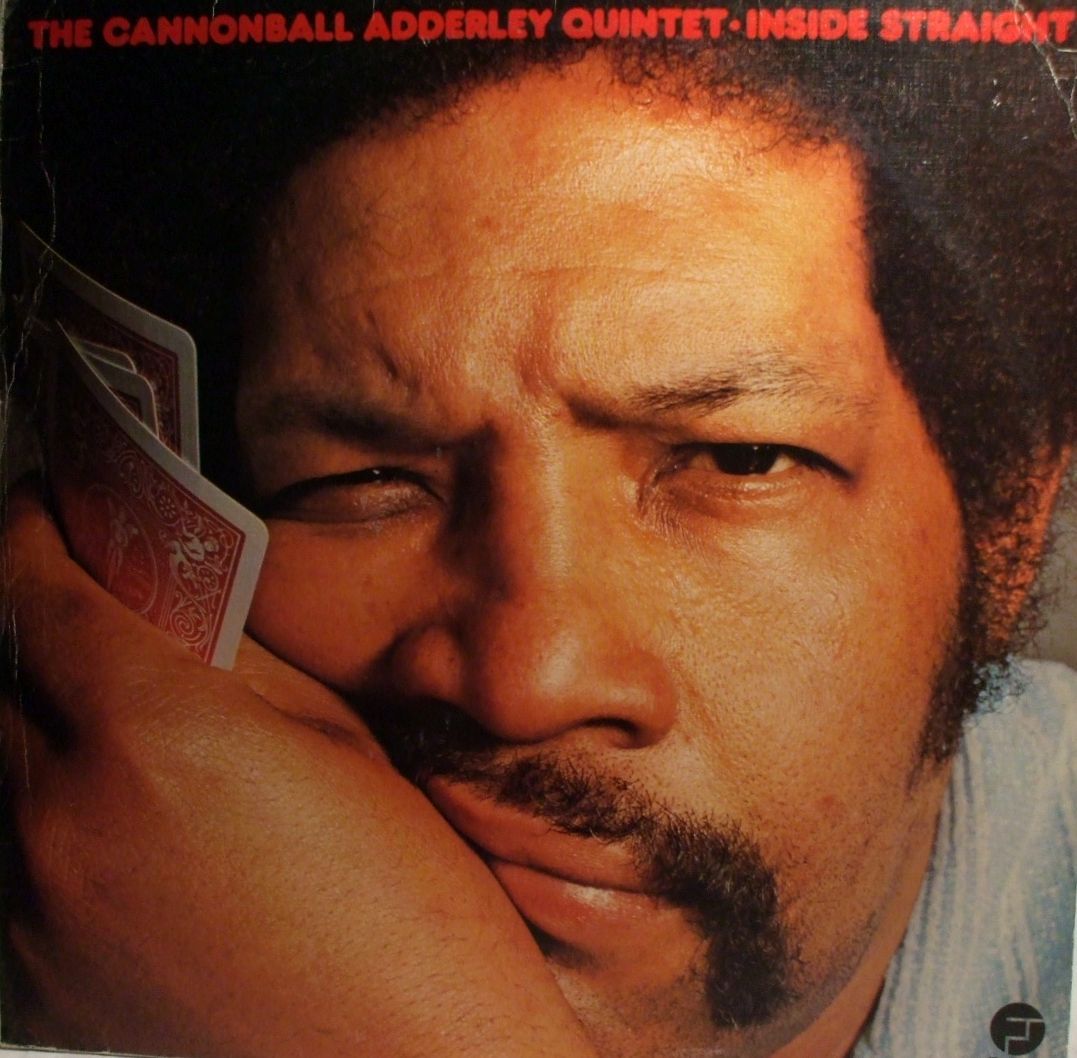Inside Straight, the last great album by Cannonball Adderley, who passed away in 1975, is a live-in-the-studio recording, a trend not invented by Adderley and producer David Axelrod as such, but definitely popularised through their earlier albums. It’s a superior jazzfunk date by an artist who stays true to himself while being in sync with contemporary developments at the same time.
Personnel
Cannonball Adderley (alto saxophone), Nat Adderley (cornet), Hal Galper (electric piano), Walter Booker (bass), Roy McCurdy (drums), King Ericsson (percussion)
Recorded
on June 4, 1973 at Fantasy Studios, Berkeley, California
Released
as FT 517 in 1973
Track listing
Side A:
Introduction
Inside Straight
Saudade
Inner Journey
Side B:
Snake In The Grass
Five Of A Kind
Second Son
The End
1963’s Mercy, Mercy, Mercy was a superb in-house session, (the cover erronously credited ‘The Club’) yet it’s 1960’s smash hit The Cannonball Adderley Quintet In San Francisco (recorded at The Jazz Workshop) that is generally credited with influencing the road live jazz production would travel. The method: put a small, appreciative (mainly standing room only-) crowd in a cozy place containing attractive acoustics and production circumstances, and serve them enough libations to feel comfortable. (or slightly off-centre)
An added bonus of In San Francisco was the deadpan and eloquent manner in which Cannonball Adderley talked the audience through the show. It was an idea originally concocted by Adderley and producer Orrin Keepnews of Riverside.
In 1973, Adderley re-united with Keepnews, then head of the jazz department of Fantasy Records. And a Cannonball introductory talk is present on Inside Straight. The quintet then dives into the title track. Now that’s how you open a live album! A funkblues boogie connected through a hot line to the quintet’s seminal recording at a church meeting, Country Preacher of 1970, including a kick-ass bridge, an irresistable bass pattern locking thumbs with a solid drum groove, cocksure soulful phrases by Cannonball and, last but not least, a growling trumpet statement by Nat Adderley that is part deadpan humour, part boisterous mating call, Inside Straight is destined to sweep you out of your seat and prompt you to grab whoever’s around for a decidedly funky ritual dance.
Both Saudade and Inner Journey are groovy cuts with a Latin flavour and contain fluid Cannonball solo’s; Nat Adderley flies through Saudade in lyrical mode, resembling Chet Baker, albeit a funkified one. The atmosphere of these tunes, as of the whole album, is warm and beguiling, courtesy also of Hal Galper’s layers of electric piano sound and probing phrases. ‘Hot’ is an adjective most appropriate for Five Of A Kind, which moves from a slow build-up to a fast-paced bebop demonstration. It’s not groundbreaking, it’s not a masterpiece, but it’s rock solid.
Snake In The Grass is a slow deep funk cut that, containing more than proficient improvisation, would make George Clinton’s group sweat. Combining such seductive repertoire with keen musical experience and intellect, the Cannonball Adderley Quintet holds in near-perfect suspension the need to entertain and the search for musical truth.
Which, come to think of it, is more or less exemplary for the sum total of Cannonball Adderley’s recorded output.



